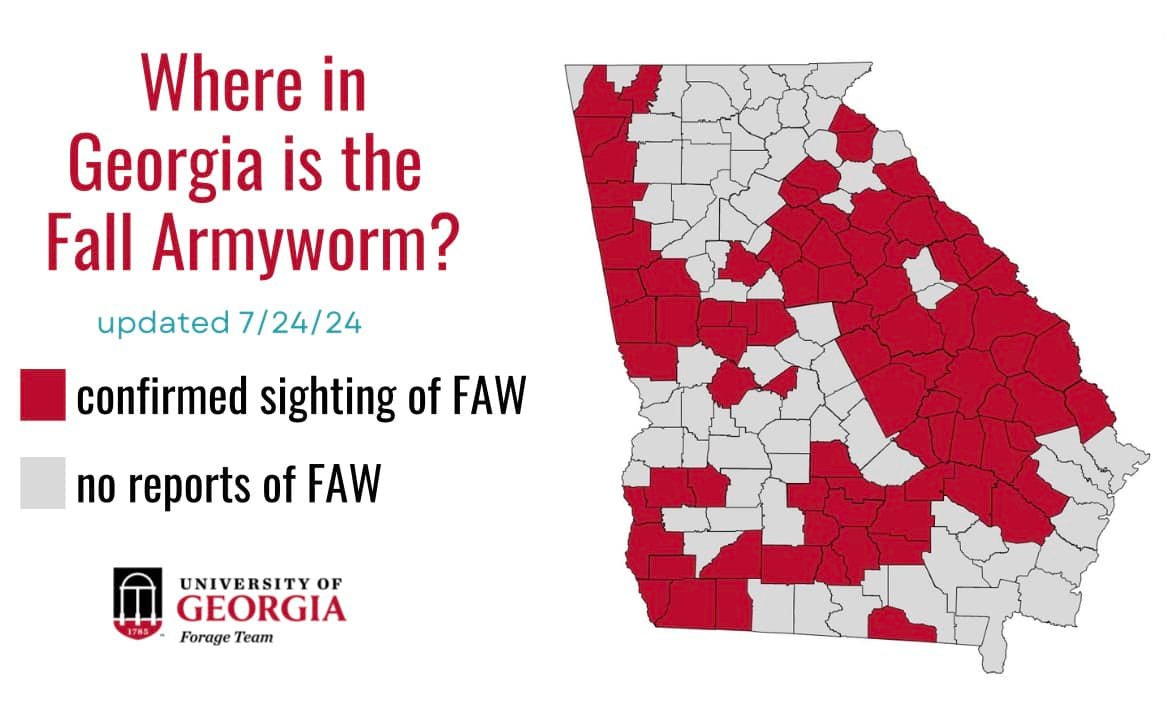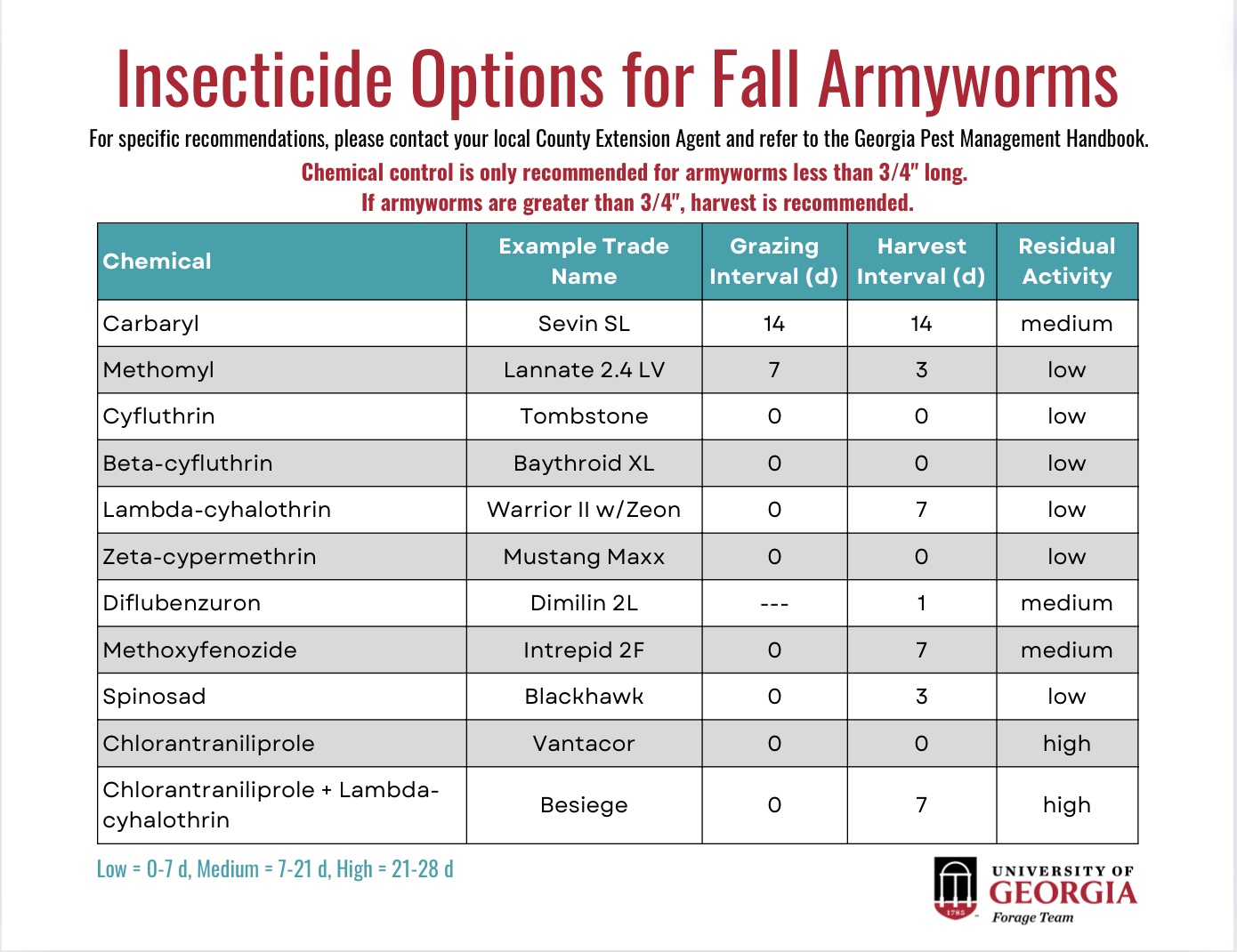Ag News
UGA Extension offers control options for fall armyworms
Posted on Jul 25, 2024 at 13:49 PM
By Lisa Baxter
UGA Extension Forage Specialist
The fall armyworm is by far the most important caterpillar pest in pastures and hayfields. These pests can quickly decimate a field of any forage crop, often selecting higher quality material first. If not controlled, armyworms can cause severe economic damage and total forage loss.
Reports of armyworm damage began coming into UGA Extension the week of July 15 and have continued this week. As of July 24, UGA Extension has received reports indicating the pests are present in almost half of Georgia’s counties. Visit the Georgia Forages Facebook page https://www.facebook.com/GeorgiaForages to report your county in a comment if it isn’t shaded in red on the map. Armyworms are being reported in other Southeastern states.

Identification

Small fall armyworms tend to stay down in the canopy during the day, and their feeding is less damaging and harder to see. The youngest larvae do not eat much but the mature larvae can eat more than all other ages put together. Large fall armyworms are fairly easy to find because of their size. They are typically most active in the early morning or late afternoon when temperatures are cooler but will feed throughout the day. Most producers will identify fall armyworms at the fully grown larvae stage. They can be up to 1.5 inches long and are light green to nearly black with light and dark stripes that stretch horizontally along the body of the worm. One of their most distinct characteristics is an inverted Y-shape on the head of the worm.
Scouting for fall armyworms and their damage
Careful scouting is the best way to prevent economic losses. The University of Georgia Extension Service recommends using an insect sweep net to identify low populations of fall armyworms before significant feeding damage occurs. Sweep samples should be collected in the early in the morning and late in the afternoon when the fall armyworms are more prevalent. Some birds such as geese or cattle egrets may serve as an indicator of armyworm activity, but this is not always guaranteed especially in the Coastal Plains where the birds are always present.
Unfortunately, fall armyworms usually go unnoticed until feeding damage occurs. Damage can appear differently depending on the forage type and conditions. Fall armyworms prefer high-quality, well-maintained forage and they will select high quality pastures and hayfields first. Most damage begins with ragged leaves or areas with stripped stems. In hayfields or pastures with tall growth, damage can be devastating with nearly all tender green vegetation being removed.
Damage may appear as thinned out grass and brown spots in overgrazed pastures which may be misdiagnosed as drought damage. The damaged patch will usually increase in size as the fall armyworm population builds. The brown color results from dehydration of plant tissues following fall armyworm feeding. Often the only vegetation left in the field after a severe fall armyworm infestation will be tough stems. Fall armyworm outbreaks are more prevalent during drought because some of their natural enemies are less active under these adverse conditions.
Prevention and Control
Textbook treatment thresholds are typically recommended at three fall armyworm larvae per square foot, but weather and forage demand may dictate a more conservative threshold. Harvesting a hay crop may be the best option for armyworm control if hay is close to cutting time and the fall armyworms are at the fully grown larvae stage.
If insecticides are required, be sure to follow all label instructions. Insecticides are labelled for specific life stages of the fall armyworm. In general, small caterpillars are easier to control than larger ones and insecticides are only recommended when the fall armyworms are less than ¾” long.
Several insecticides are available for young larva, but we should pay careful attention to grazing or harvesting restrictions related to these products. The products recommended for use in Georgia are listed in the graphic below. You may want to consider a residual control option. Products vary in their length of residual control and application cost, so you will need to determine the potential returns on this investment. For more specific insecticide recommendations for your area, please consult with your local Extension Agent.

NOTE: This article appeared in the July 18 edition of Morning Ag Clips
- Categories:
- Tags: